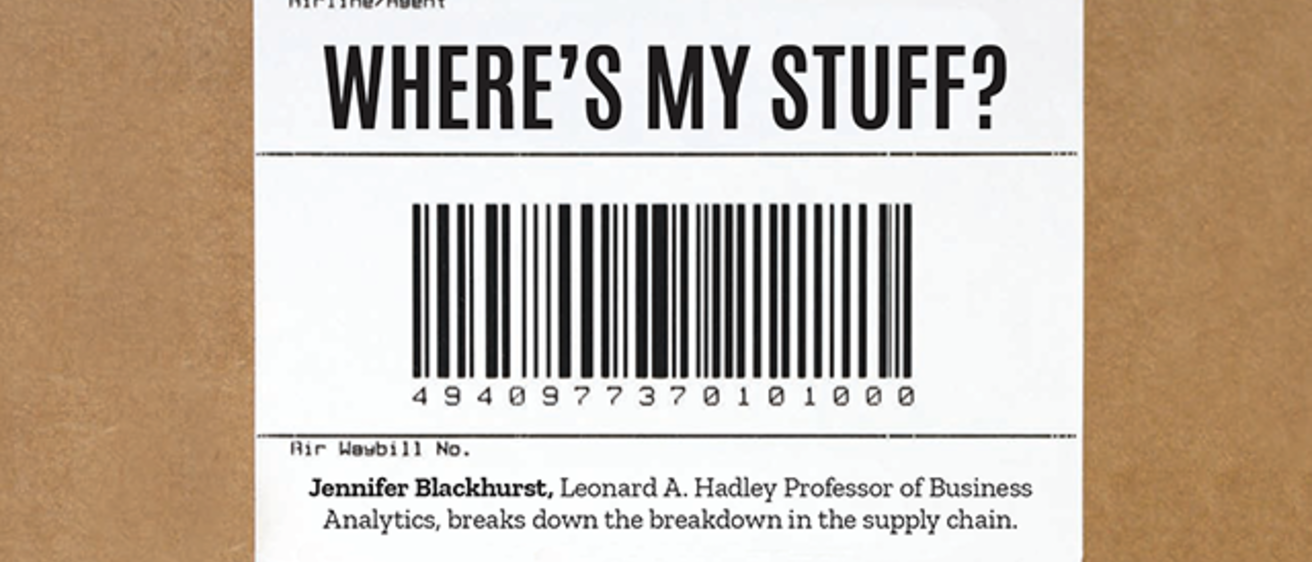Back in spring 2020, consumers had trouble finding toilet paper and hand sanitizer while trampolines and exercise equipment became scarce. With the COVID-19 pandemic sweeping the globe, some of the shortages of supplies and delays on certain goods seemed reasonable. But now, nearly two years into the pandemic, there is still lag time on getting everything from new cars to new furniture.
What’s going on?
“Even small changes in demand can ripple and spread and grow and propagate to something really unmanageable as it moves through the supply chain,” said Jennifer Blackhurst, Leonard A. Hadley Professor of Business Analytics. “It’s also really impacted by the complexity of the supply chain.”
That means a consumer’s new sofa might be on a container ship out at sea waiting to enter a port with massive delays. Customers who ordered new jeans wait for them to come in the mail because of labor shortages or factory closures. Their new vehicles might be stalled at the factory due to a lack of microchips.
Even just one disruption in the supply chain, such as a labor shortage, a manufacturing plant shutdown, a shipping delay, or fluctuation in demand, can cause what’s called the bullwhip effect, the idea that when disruption starts at one point in the supply chain, it doesn’t stop there. Rather, it ripples and spreads, often growing in intensity and impact as it moves through the entire supply chain, Blackhurst said.
During the pandemic, multiple disruptions have plagued the supply chain, creating a massive backlog of goods, which is why consumers are still experiencing frustration especially as the winter holiday retail season approaches.
What can companies do to mitigate these shortages, delays, and losses?
In the short term, smart companies are trying to adopt an agile mindset as they react to disruptions in their supply chains. For some businesses, that means paying a premium to expedite shipping on their products or parts. For others, that means trying to find creative ways to detour around the disruptions in their supply chains.
In the longer term, Blackhurst said that companies might need to think more proactively about risk management.
Since the supply chain is incredibly complex and interconnected, one of the most effective ways of managing risk is gaining more visibility from their suppliers and their suppliers’ suppliers and their suppliers’ suppliers’ suppliers. That way, they’ll be able to more quickly pivot when a disruption occurs.
Companies can also reevaluate their inventory levels. Do they need to have more of a buffer going forward? Rethinking their suppliers is another idea. Would reshoring or nearshoring expose companies to less risk? Using analytics to see how suppliers have performed over time can be helpful in determining whether a company should continue a relationship or end it.
“It’s a balance between being lean and efficient and responsive and agile, knowing that supply chains are exposed to risk,” Blackhurst said.
This article first appeared in the Winter 2022 edition of Tippie Magazine. Alumni are invited to update their contact information with the college to be placed on the mailing list for future print editions.
